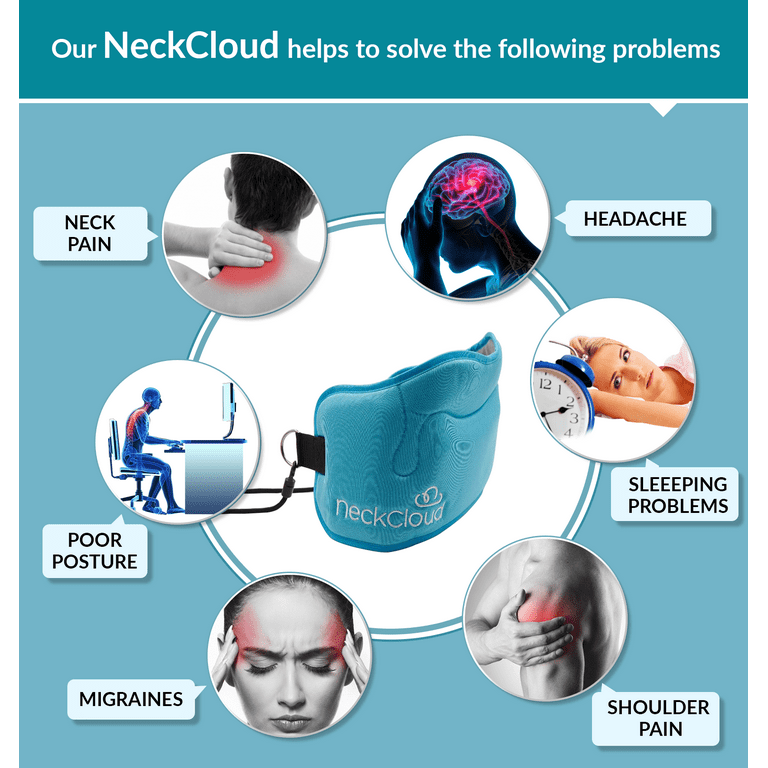Discover Neck Cloud: A Basic Remedy for Neck Discomfort and Stress
Discover Neck Cloud: A Basic Remedy for Neck Discomfort and Stress
Blog Article
Neck Pain in the Office: Identifying Threat Factors and Carrying Out Ergonomic Solutions
Neck discomfort in the workplace is a common concern that can affect worker health and productivity. By comprehending the various risk variables contributing to neck discomfort and carrying out ergonomic remedies, companies can produce a much more favorable job environment. Recognizing these factors is essential in developing targeted strategies to reduce pain and avoid future injuries. Attending to ergonomic problems not just enhances staff member wellness but also advertises general job fulfillment and efficiency.
Usual Root Causes Of Neck Pain
Neck pain in the workplace is a widespread problem that can be associated to several usual reasons. Furthermore, repetitive activities such as constant bending, turning, or getting to can additionally contribute to neck pain over time.

Ergonomic Risk Variables
Poor functional designs in the workplace can dramatically add to neck pain amongst workers. Factors such as incorrect desk elevation, inadequate chair support, and unpleasant positioning of computer monitors can all play a duty in the advancement of neck discomfort. When workers are forced to rest for extended durations ready that stress their neck muscle mass, it can lead to stiffness, pain, and much more serious bone and joint issues with time.
Furthermore, poor ergonomic techniques can result in workers adopting uncomfortable poses while working, such as craning their necks to see a computer display or reaching uncomfortably for a mouse or key-board. neck cloud. These repetitive motions and abnormal placements can put unnecessary stress on the neck and surrounding muscle mass, causing discomfort and reduced performance

Workdesk Arrangement Recommendations
When establishing a desk in the work environment, it is necessary to pay focus to the comfort designs of the environment. To minimize the risk of neck pain and discomfort, there are several desk setup suggestions that workers ought to think about. First of all, make sure that the computer system screen is positioned at eye level to stop straining the neck by searching for or down. The keyboard and mouse ought to be placed at a height where the elbow joints are bent at a 90-degree angle to promote appropriate wrist positioning. Furthermore, the chair height ought to allow the feet to rest flat on the flooring with upper legs alongside the ground.
It is likewise crucial to have appropriate lighting to decrease eye stress, as squinting or leaning onward can bring about neck stress. Organize the workdesk design to keep frequently made use of products within arm's reach, limiting the requirement for repetitive turning or reaching movements. By applying these desk setup referrals, workers can create an extra ergonomic office that supports neck wellness and minimizes the danger of developing occupational neck pain.
Extending and Exercise Tips
To maintain versatility and reduce muscular tissue tension in the office, integrating stretching and exercise routines can be beneficial for general health and efficiency. Simple desk-friendly stretches can assist alleviate neck pain and protect against stiffness. Neck rolls, shoulder shrugs, and mild side-to-side neck stretches work in eliminating tension. Furthermore, including exercises like chin tucks, shoulder blade presses, and top back stretches can help enhance muscular tissues that support great stance.
It is important to take short breaks throughout the workday to carry out these workouts. Establishing reminders or using apps that trigger activity can help establish a routine extending regimen. It is very important to listen to your body and prevent overstretching, specifically if you are brand-new to these workouts. Uniformity is key, so objective to include extending and exercise into your daily work routine. By focusing on these tasks, you can improve your physical wellness, minimize the threat of neck discomfort, and boost your total performance in the workplace.
Significance of Routine Breaks
In a hectic job environment where demands can add to physical strains like neck pain, establishing a routine that emphasizes the importance of regular breaks is paramount (neck cloud). Taking regular breaks throughout the workday is vital for stopping and easing neck discomfort. Prolonged durations of resting or recurring jobs can bring about muscular tissue stress and stiffness in the neck and shoulders. By incorporating brief breaks right into the work routine, staff members can decrease the risk of creating neck pain and improve total comfort and efficiency.
Regular breaks enable staff members to rest their muscular tissues, stretch, and change settings, stopping rigidity and promoting much better blood circulation. Encouraging workers to take brief breaks every 30-60 minutes can help in reducing the accumulation of stress in the neck and shoulders. These breaks can also serve as a possibility for employees to practice relaxation methods or mild neck stretches, further promoting bone and joint wellness. Executing a society that values and focuses on normal breaks can have a significant effect on lowering neck discomfort and improving overall wellness see here in the work environment.
Verdict
Finally, addressing ergonomic risk factors and executing appropriate workstation arrangements are important in decreasing neck discomfort in the office. By advertising excellent posture, offering sufficient support, and encouraging regular breaks and stretches, organizations can create a healthier and more productive work environment for workers. Prioritizing employee health via ergonomic remedies is crucial to stop pain and enhancing general work environment fulfillment.
Neck pain in the workplace is a prevalent concern that can influence worker wellness and efficiency. By identifying and addressing these common causes of neck pain in the Related Site workplace, companies can take aggressive steps to produce a more ergonomic and comfy work environment for their staff members.
Poor comfort designs in the work environment can substantially contribute to neck discomfort amongst workers. By executing these desk arrangement suggestions, employees can develop a much more ergonomic work area that supports neck wellness and minimizes the risk of developing job-related neck see here pain.
Neck rolls, shoulder shrugs, and gentle side-to-side neck stretches are efficient in eliminating stress.
Report this page